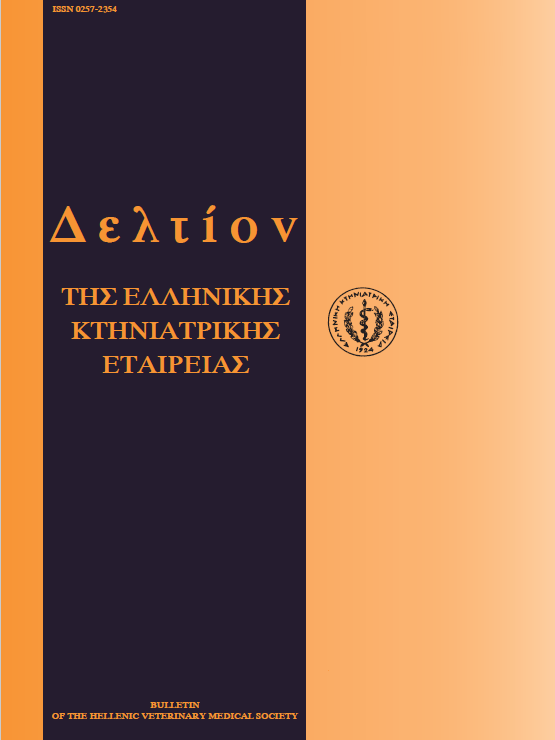The origin of Alpine breed: An atavistic phenomenon
Аннотация
The objective of this study was to describe the origin of the Alpin breed through an atavistic phenomenon. A purebreed Alpin buck appeared horns entirely different from those of its breed. A number of different parameters were studied, such as the number of chromosomes, the body conformation, the colour, the horns, the head as well as the body dimension data. These parameters were compared with those from ten Alpin breed bucks and from thirteen aegagrus of the same age. We found that the horns of the buck that we examined were similar with those of the aegagrus. This seems to be an atavistic phenomenon. It is possible the Alpinbreed to have as ancestor the aegagrus. The clockwise of the left horn, which appears in the Alpin bucks, is a characteristic of the Capra prisca. This event points to the possibility that the Alpin breed is the product of a crossing of domestic goats, which originated from Capra prisca and Capra aegagrus.
Article Details
- Как цитировать
-
KARATZAS (Γ. ΚΑΡΑΤΖΑΣ) G., MALLINIS (Δ. ΜΑΛΛΙΝΗΣ) D., & TSERTSENES (Ν. ΤΣΕΡΤΣΕΝΕΣ) N. (2018). The origin of Alpine breed: An atavistic phenomenon. Journal of the Hellenic Veterinary Medical Society, 49(1), 29–33. https://doi.org/10.12681/jhvms.15739
- Выпуск
- Том 49 № 1 (1998)
- Раздел
- Research Articles

Это произведение доступно по лицензии Creative Commons «Attribution-NonCommercial» («Атрибуция — Некоммерческое использование») 4.0 Всемирная.
Authors who publish with this journal agree to the following terms:
· Authors retain copyright and grant the journal right of first publication with the work simultaneously licensed under a Creative Commons Attribution Non-Commercial License that allows others to share the work with an acknowledgement of the work's authorship and initial publication in this journal.
· Authors are able to enter into separate, additional contractual arrangements for the non-exclusive distribution of the journal's published version of the work (e.g. post it to an institutional repository or publish it in a book), with an acknowledgement of its initial publication in this journal.
· Authors are permitted and encouraged to post their work online (preferably in institutional repositories or on their website) prior to and during the submission process, as it can lead to productive exchanges, as well as earlier and greater citation of published work.



